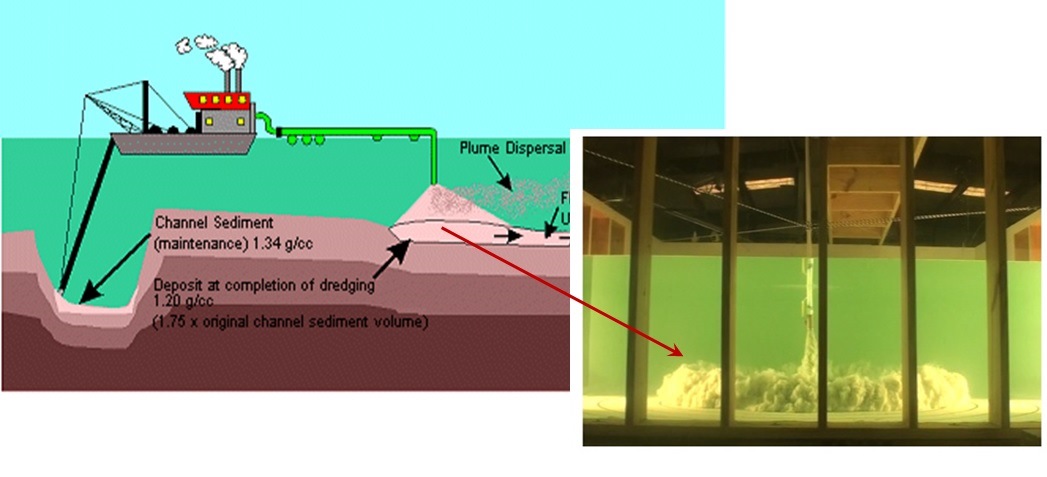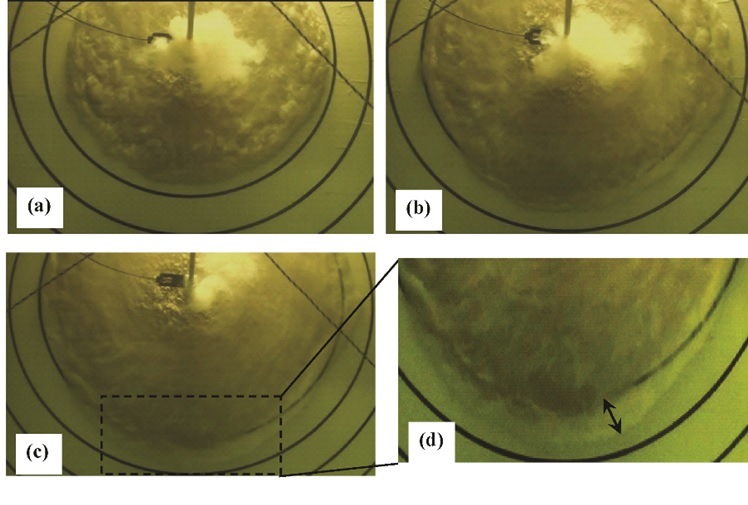| Mijanur R. Chowdhury, Ph. D.
|
|
Project Focus
Cohesive sediment-laden underflows in coastal
dredging and disposal
Background and Motivation
Each
year large volumes of sediments are dredged from rivers, waterways, ports and
harbors around the world primarily to maintain and enlarge their navigability.
An estimated 230 million cubic-meters of sedimentary materials are dredged by
the U.S. Army Corps of Engineers in the United States annually. Much of these
sedimentary materials dredged (especially those from rivers, channels, lakes
and estuaries) are cohesive fine-grained fluid mud that consists of water,
cohesive sediment particles (clay and silt), and organic material. Among
the different dredging methods employed in removing fluid mud, the most
common and economical maintenance dredging method is the hydraulic
pipeline dredging method, in which the
hydraulically dredged fluid mud is generally pumped and then
transported
through a suitable pipeline to dispose into a designated aquatic
disposal area (Fig. 1).
As soon as they are discharged, the fluid mud starts to descend in the
water
column and then flow away from the impingement point at the bottom in
the form
of an underflow due to the density difference of the fluid mud and the
ambient
water. In order to develop predictive models for the fate of the
discharged
fluid mud, it is of importance to understand the propagation dynamics
of fluid
mud underflows.The main goal of this research, through a comprehensive
experimental and theoretical investigation, is to understand the propagation
dynamics of fluid mud underflows in relation to the density, rheological properties and
release configurations of fluid mud.Methods
- The project wa carried out through laboratory experiments that involved
discharging fluid mud at a
constant volume flow rate from a submerged vertical pipe into a body of water (Fig. 1).
- The experiments involved a wide range of initial parameters (e.g., height of
the discharge pipe from the bottom, flow rate, and concentration of the fluid
mud at the time of discharge).
- Before each experiment, the density and rheological
properties of the prepared fluid mud mixture was measured. The fluid mud suspensions exhibited shear-thinning non-Newtonian
behavior as the viscosity decreases with shear rate, except for the suspensions
with low concentration values.
Key FindingsThe
discharged fluid mud in the experiments descended as buoyant jets and
formed axisymmetric underflows that flow away from the impingement
point.Analysis of the experiments revealed the followings propagation dynamics of the underflows:
- Near the impingement point,
underflows behaved as momentum-driven wall jets (Fig. 2). When the
discharged dense fluids impinge on the bottom as energetic jets, the
length of the horizontal wall jet was observed to scale with the
momentum length scale and source bottom separation distance. For
plume-like impingements, the length of the horizontal wall jets was
found to be linearly proportional to the source-bottom separation
distance.
- After the momentum-driven wall jet phase, underflows
propagated as inertial gravity currents which was modeled by a shallow
water model.
- The propagations of the underflows were greatly influenced by the non-Newtonian rheology of fluid mud.Few underflows
in the experiments transitioned into the viscous propagation phase;
these would not transition into the viscous phase if the underflow
fluid were less viscous (e.g., saline solution), even for the same
experimental conditions. A box model solution was developed for the viscous propagation of a non-Newtonian (powerlaw) axisymmetric gravity current.
- Underflows in few experiments exhibited a phenomenon called abrupt settling in which the clay particles settled abruptly en masse
and only a turbidity cloud propagated (Fig. 3). This process bears
important physical significance in coastal dredge disposal operations
in which mud mounds may form due to the abrupt settling process.
Publications
Peer-reviewed journal articles: - Chowdhury,
M.R., and Testik,
F.Y., (2015). “Axisymmetric underflows from impinging buoyant jets of
dense
cohesive particle-laden fluids”, Journal
of Hydraulic
Engineering,
ASCE, Vol.
141, No. 3,04014079,
1-15.
pdf
link
Peer-reviewed conference proceeding: - Chowdhury,
M.R., and Testik, F.Y., (2011). “Subaqueous sediment
gravity flows from open
water pipeline dredge disposal: laboratory experiments and mathematical
modeling”, Conference on Coastal Engineering Practice:
Engineering
Sustainable Coastal Development, ASCE, 460-472.
pdf
link
Presentations: - Chowdhury, M. R.*, and Testik, F. Y., (2014).
Propagation dynamics of mud slurry underflows, Pacific Institute for the
Mathematical Sciences Workshop on Mathematicl Modeling of Particles in
Fluid Flow, August 17-22, Banff International Reseach
Station, Alberta, Canada. abstract
link
|
| << Back to Home | |
|


